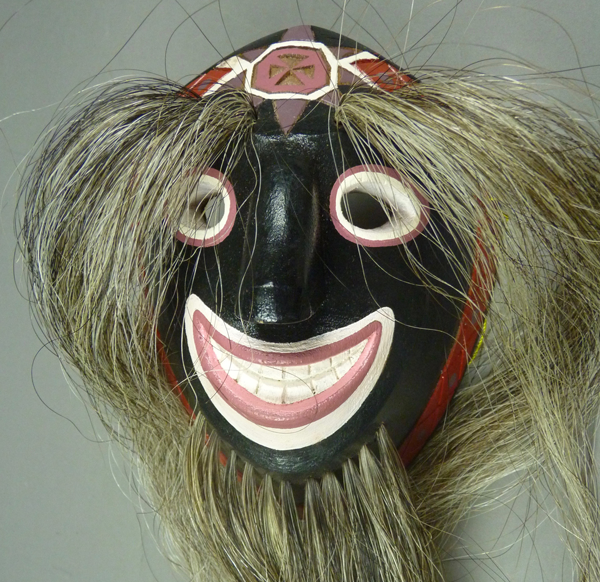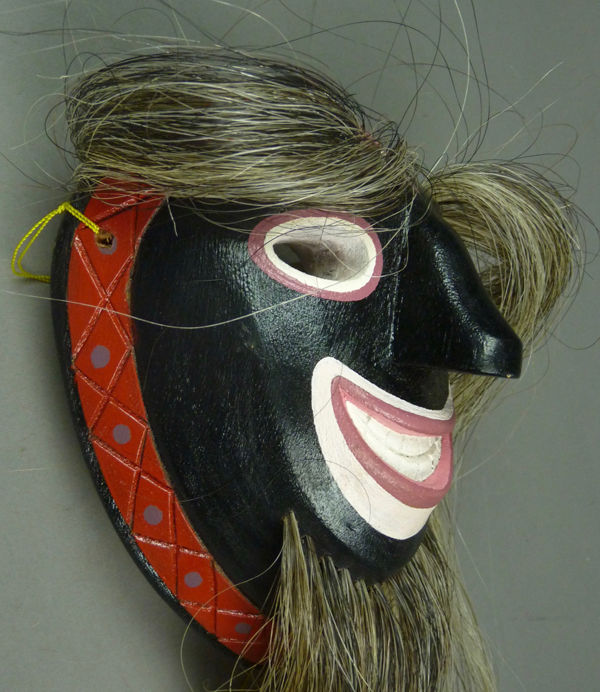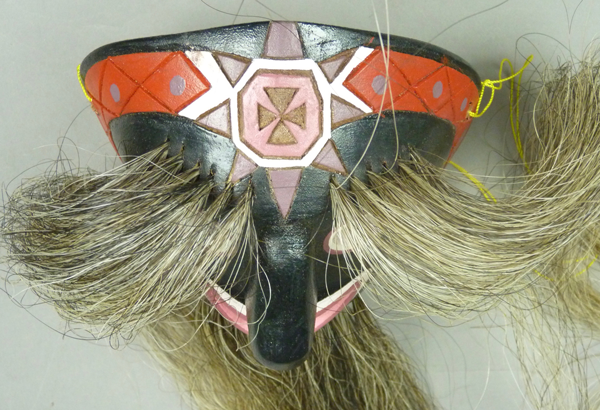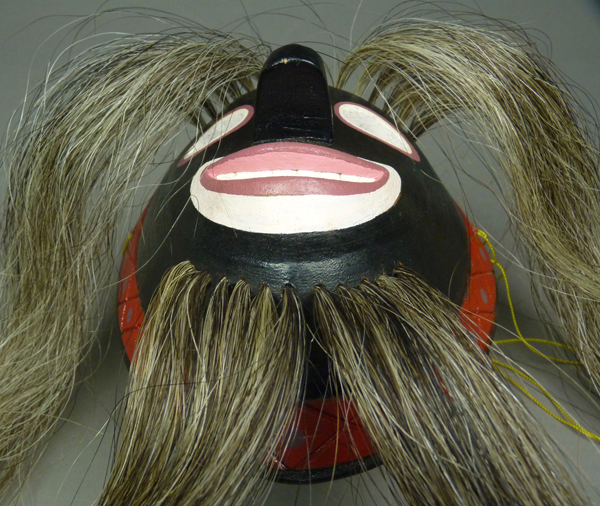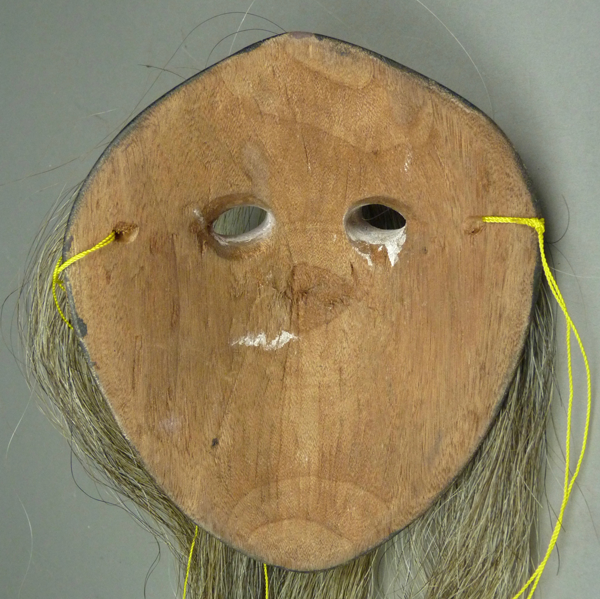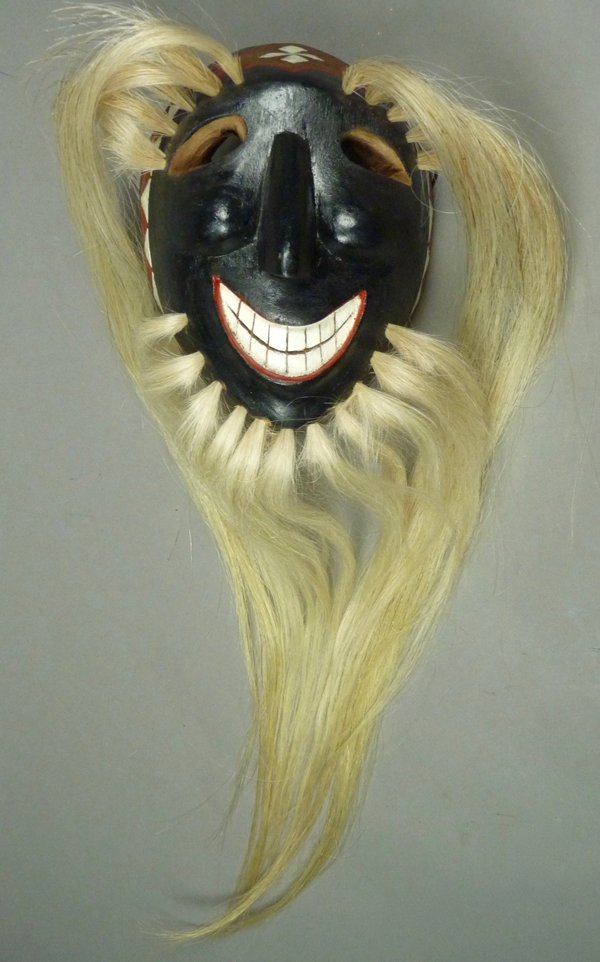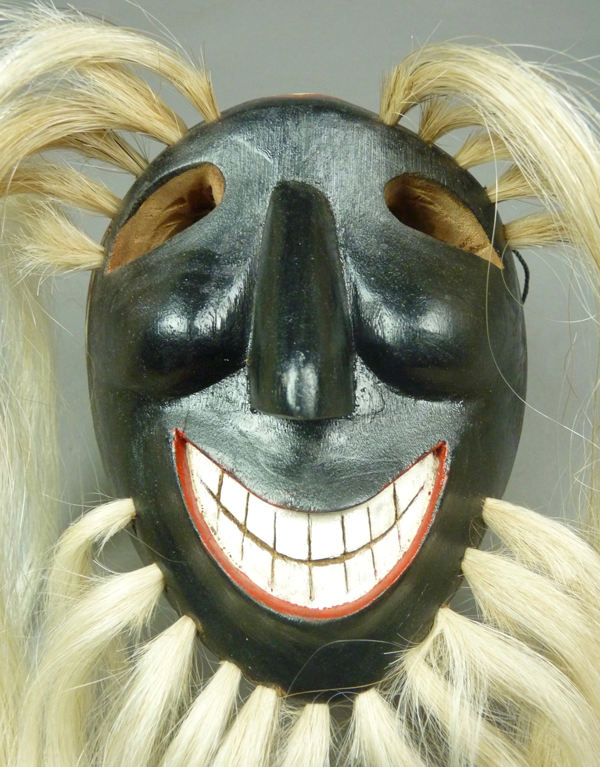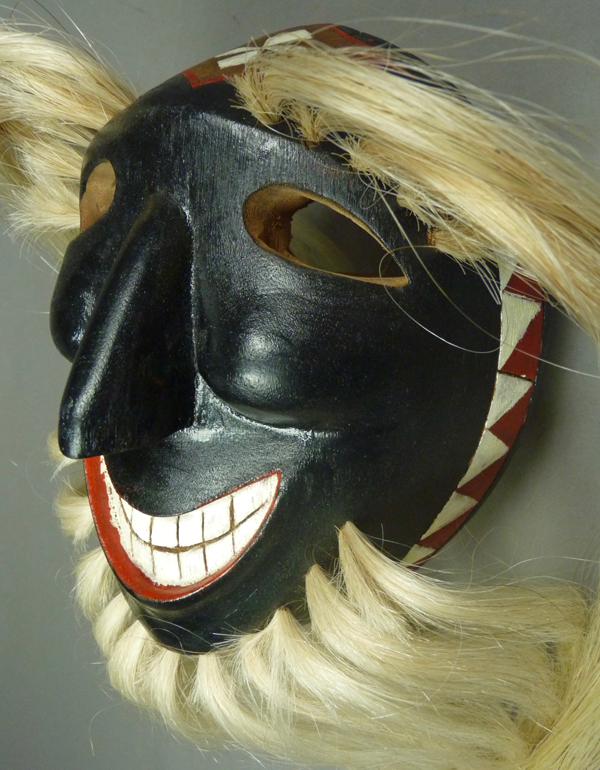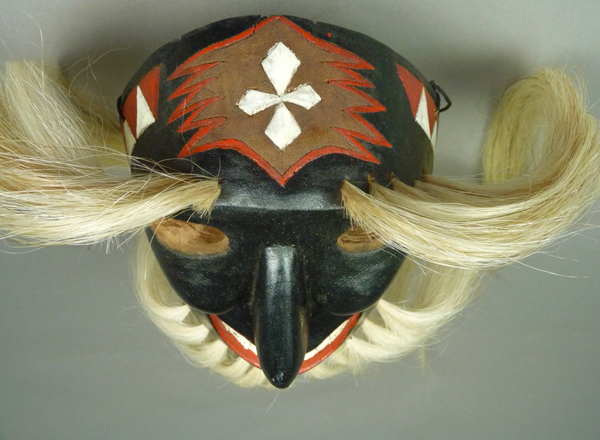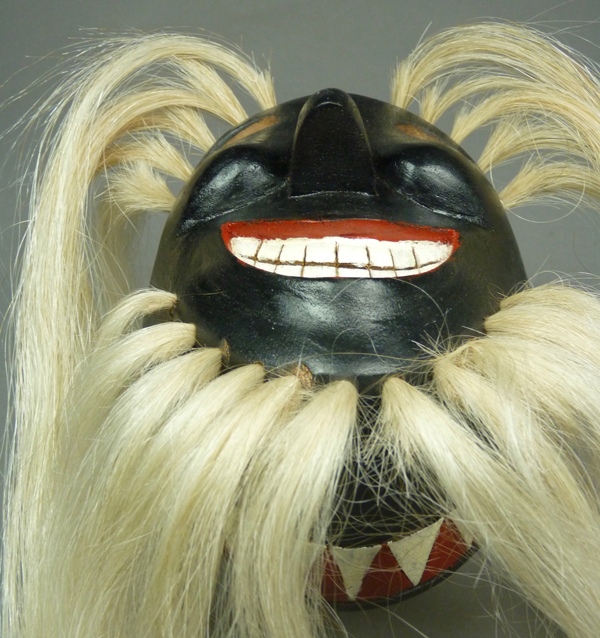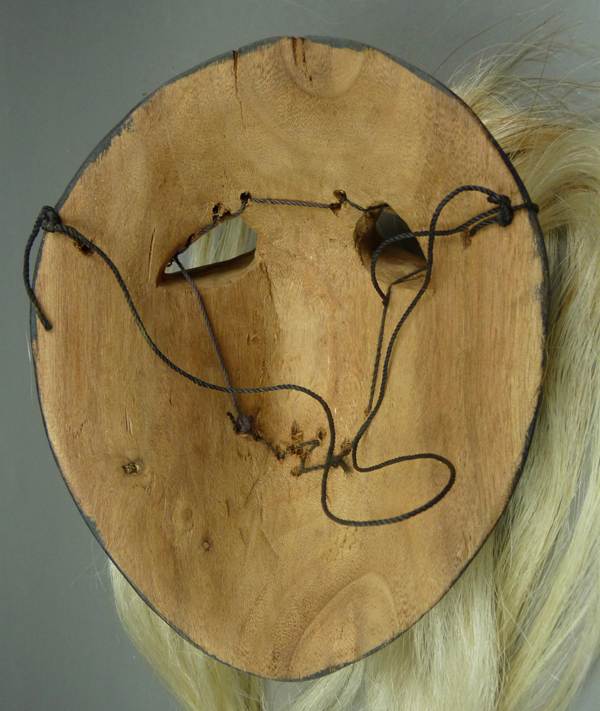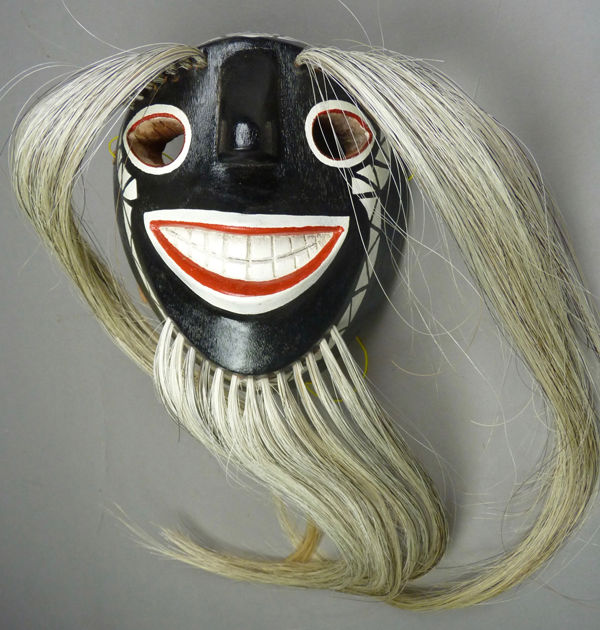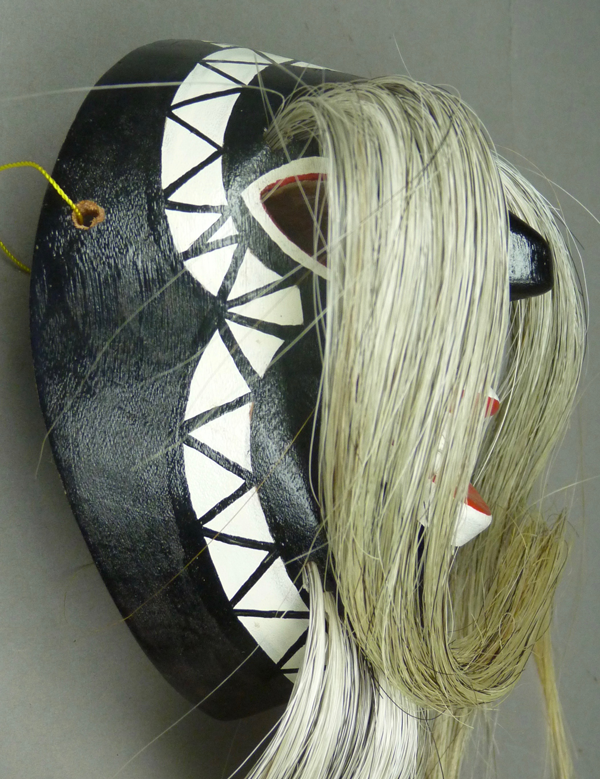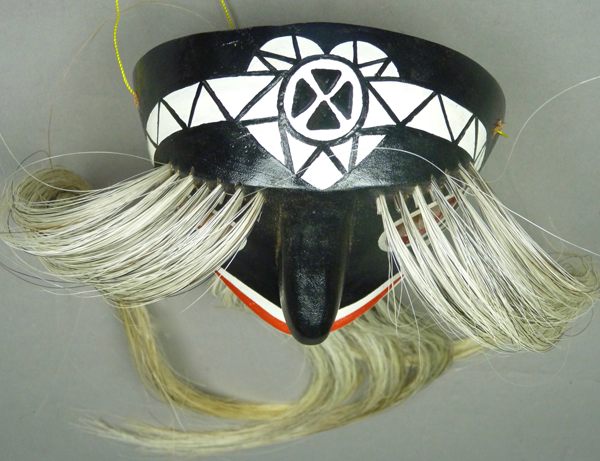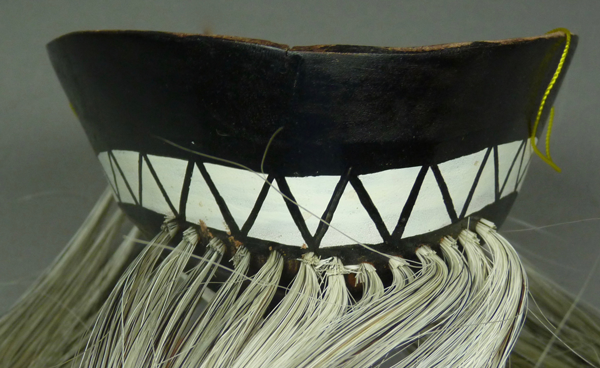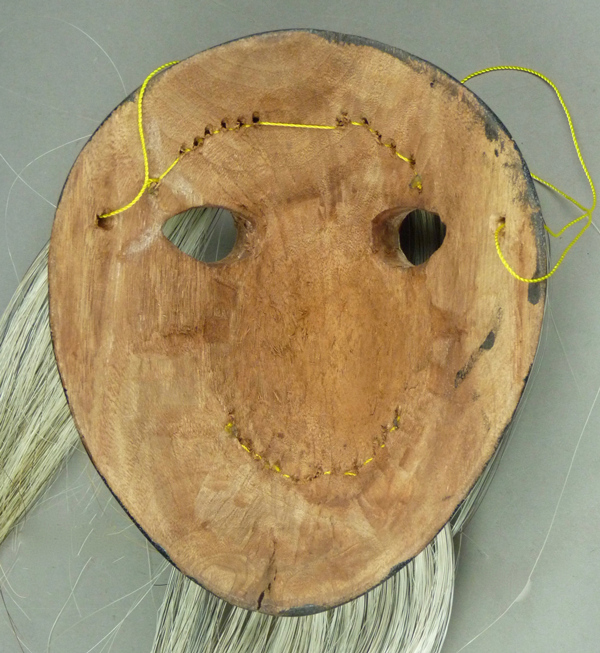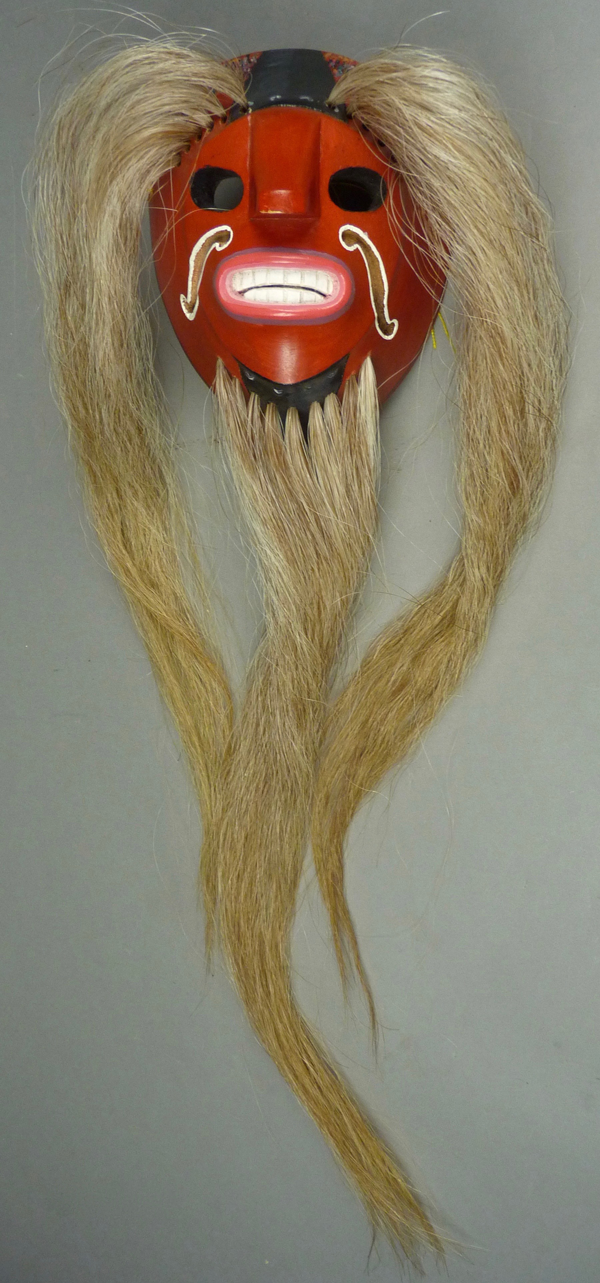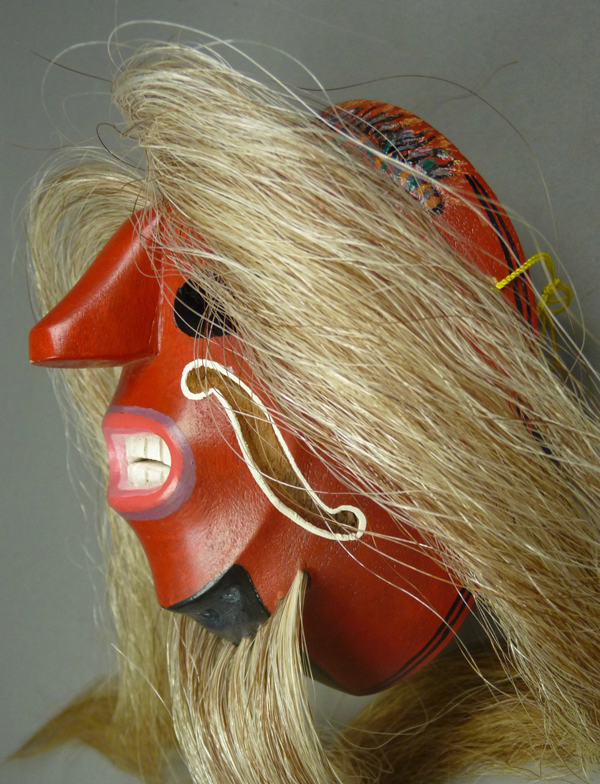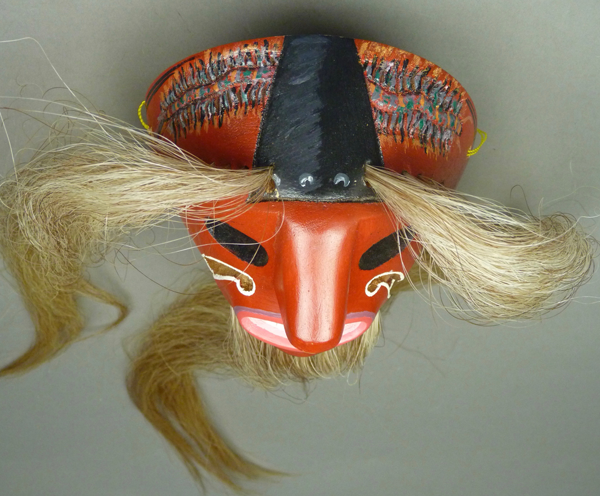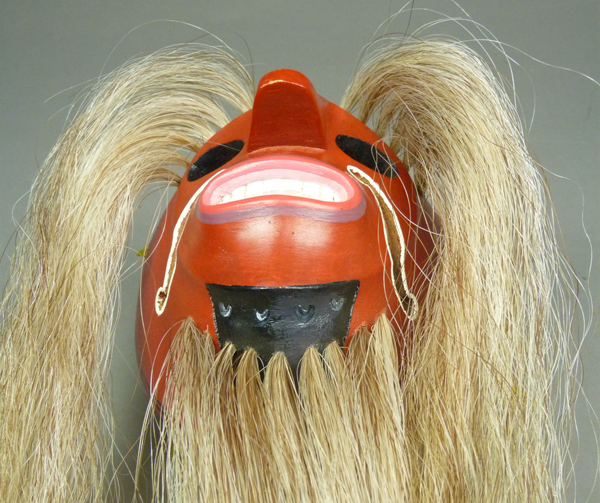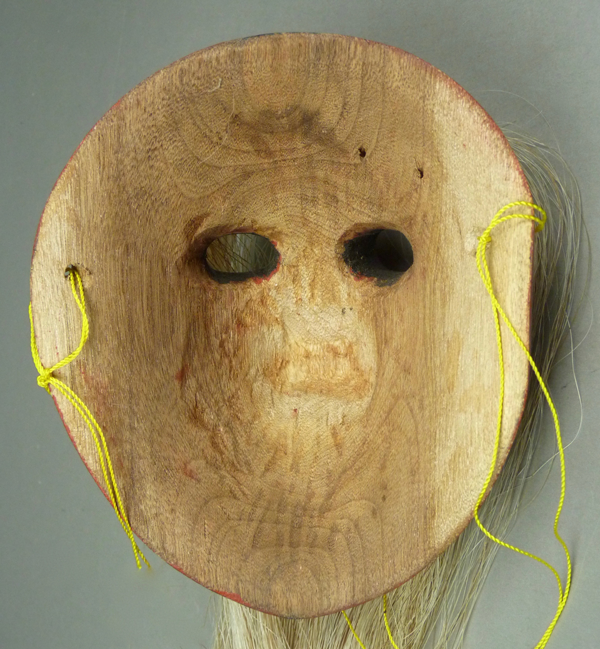I began this series of posts about Mayo Pascola masks from Sonora by examining the work of carvers who had been studied by James Griffith, back in 1965. Gradually we have been shifting towards other carvers and more recent masks. In last week’s post about masks with relief carved snakes we clearly ventured into the world of contemporary Rio Mayo carvers, and they will be the subject of the next few posts. Today I will begin with the contemporary carver whose masks introduced me to this group, back in 2010. As has often been the case, I learned about this artist from my friend Tom Kolaz, who said, “His artistry blows me away.” We agreed that we should buy some masks by this talented young man in order to encourage him to develop as an artist, and over the year that followed I purchased four undanced masks.
As it turned out, Cuco was stimulated by our support. He had already been making masks that were modeled on those of the last generation of carvers, such as Bonifacio Balmea, and this is the style that you will see in this post. However he also began to experiment more bravely with a modern style that appealed to Pascolas who were his contemporaries. These new-style masks were an immediate hit, and over just a few years Cuco became quite popular with these younger dancers, so much so that none of his most exciting masks ever came my way. I tell this not out of unhappiness, but to alert you that the masks in my collection are just the tip of the proverbial iceberg, and his recent masks are among the very best in the Mayo area.
Initially I didn’t even have a name for this carver, later I learned that his nickname was “Cuco,” and eventually Tom told me that his formal name is Refugio Hipólito Ruiz Quintero and that he lives in a very small town near Etchojoa, Sonora. I will call him Cuco. You will see that the artistry of Cuco’s carving speaks for itself. Here is one of the masks from that first group of four.
As I mentioned in earlier posts, the very long eyebrows and beards seen on Mayo Pascola masks in Sinaloa have gradually been adopted by the Rio Mayo carvers in recent years.
Cuco’s perfectionism certainly extends to the careful application of the hair tufts. On this mask the tufts are secured by small pegs.
In last week’s post I showed two Rio Mayo Pascola masks that had snakes carved in relief on their faces, and I commented that the painted decorations on the second mask mirrored those on the snakes’ bodies, as if there were painted snakes alongside those carved in relief. I noted how interesting these seemed to me, and then to my friend Tom Kolaz, when we encountered them back in 2004. By 2010, when Tom introduced me to Cuco’s masks, he had discovered that these snake-decorated masks were more popular among Mayo Pascolas than we had imagined. In this context he had learned something new from Cuco’s comments about the masks he made. Briefly, although Cuco did already make masks with elaborate snakes and other forms that were carved in relief, he also noted that there were painted patterns (not carved in relief) on his masks that represented snakes, and it seemed he was referring to designs that have been long familiar to us as typical elements of Rio Mayo rim designs. The implication was that snake images may have been on Mayo masks for a long time. Perhaps the abstract rim design on this mask represents a snake. Of course every carver has the right to ascribe personal meaning to his work; we can’t assume that such ascriptions are generalizable to the work of other carvers.
The rim design is elaborately connected to the forehead cross.
On this mask the rim design continues uninterrupted around the chin.
This mask is 7 inches tall, 5¾ inches wide, and 3 inches deep.
This appears to be an undanced mask. Cuco did not tie the hair tufts from the back of the mask. The tufts are held by pegs.
The second mask is larger than Cuco’s usual masks. As I recall, this was made to a customer’s specifications, and then that Pascola dancer failed to take delivery.
With these round cheeks, this is a charming face.
This is a very traditional rim design that is commonly seen on Yaqui and Mayo masks. Some Yaqui carvers refer to these white triangles as “teeth,” but could this design also be meant to represent a snake?
The forehead cross is traditional in design, but surrounded by an elaborate frame.
The nose is very simple in design, but gracefully carved.
Here too we see a rim design that is continuous around the chin.
This mask is 7¾ inches tall, 6 inches wide, and 3 inches deep.
There is no staining from use. On this mask the hair bundles are tied in place.
The third mask in today’s post is interesting because we see what appears to be a snake’s body circling the face, dipping into the cheeks and out towards the rim.
This painted snake does double duty as the rim design.
This snake is integrated with another elaborate arrangement around the forehead cross—coiled in the shape of a heart. So we see this unusual syncretic blending of Christian and indigenous designs.
The band which apparently represents a snake’s body circles the chin.
This mask is 6 inches tall, 5¼ inches wide, and 3 inches deep.
This too is an undanced mask. The hair bundles are tied.
The fourth of these masks seems abruptly much less traditional, and provides a hint of the evolution or expansion in Cuco’s style that was emerging at that time.
This one, which is smaller than Cuco’s norm, doesn’t even have a forehead cross.
It is artfully carved. There is a hollow area on the cheek, as if this is not a mask but a violin.
The carver—Cuco—is also a traditional musician, who plays the violin during Pascola dancing, in concert with another man who plays the harp. The violin plays the melody, while the harp is plucked like a jazz bass and plays rhythmic chords. When dancing to the harp and violin, the Pascolas turn the mask from the face. The mask is worn over the face when the Pascola dances to a flute and drum. Wearing this mask, a Pascola could pretend to be the maker of the music that accompanies his dancing.
Here is a link to a Mayo fiesta in the state of Sinaloa, with a typical Pascola fiddle tune.
https://www.youtube.com/watch?v=jt-YQ0_4ACs
The black band on the forehead suggests the tailpiece of a violin. The brow hair might remind of a violin bow. A centipede, carved in relief, is depicted crawling over the top of the mask.
Below the chin we find another violin tailpiece, with four holes to anchor the ends of the violin strings.
This mask is 6 inches tall, 5 inches wide, and 3¼ inches deep.
This mask too was never danced.
I too am a fiddler, but I did not order this design; it just came to me.
Next week we will see two traditional masks by Cuco that have been used over several years in Mayo fiestas.
Bryan Stevens


